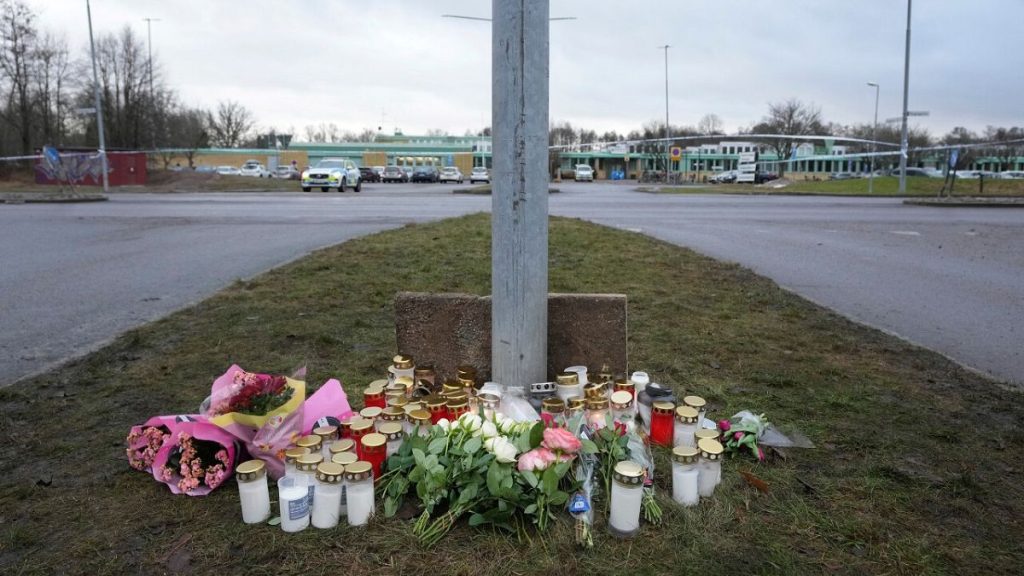The tranquil town of Örebro, Sweden, located approximately 200 kilometers west of Stockholm, became the scene of the nation’s worst mass shooting, shattering the country’s sense of security and leaving an indelible mark on its history. The attack, which unfolded at the Campus Risbergska adult education center, claimed the lives of at least 11 individuals, including the perpetrator, and left at least five others seriously wounded, a grim toll that authorities feared could rise as investigations continued. The school, catering to a diverse student body pursuing primary and secondary education, Swedish language courses, vocational training, and programs for individuals with intellectual disabilities, became an unlikely backdrop for such horrific violence.
The unfolding tragedy began with a seemingly innocuous commotion outside a classroom. Students initially dismissed the sounds as a minor disturbance, perhaps a playful scuffle or the accidental overturning of furniture. However, the escalating din of shouts and screams quickly transformed into a chilling realization: a shooting was underway. Students, gripped by fear and uncertainty, barricaded themselves inside their classrooms, desperately seeking refuge from the unseen assailant. Andreas Sundling, a student who witnessed the horrifying events firsthand, recounted the agonizing two-hour wait as he and his classmates huddled together, using tables and chairs to block the door, their fear amplified by the sounds of the unfolding carnage just outside.
As police units descended upon the scene, the gravity of the situation became starkly apparent. Upon emerging from their classroom, Sundling was confronted with a gruesome sight: blood splattered across the school’s entrance, a stark reminder of the violence that had transpired. The immediate aftermath was characterized by chaos and confusion as emergency services worked to secure the area and tend to the wounded. The normally peaceful town was transformed into a scene of intense activity, with police helicopters circling overhead and heavily armed officers patrolling the streets.
In the wake of the shooting, a nation grappled with the shock and grief of an unprecedented tragedy. Tributes poured in from across the country and around the world, as people struggled to comprehend the senseless violence. Candles flickered and flowers piled up near the school, forming a makeshift memorial to the victims, a poignant symbol of the community’s shared sorrow. King Carl XVI Gustaf and Prime Minister Ulf Kristersson ordered flags to be flown at half-staff at government buildings and the Royal Palace, a solemn gesture of national mourning.
The investigation into the shooting immediately became a top priority, with authorities working tirelessly to piece together the events leading up to the attack and determine the motive behind the gunman’s actions. Roberto Eid Forest, head of the local police, confirmed that the suspected gunman was among the dead, but the identity and background of the perpetrator remained shrouded in mystery. Preliminary investigations suggested that the gunman acted alone, and no immediate connections to terrorism were identified. A raid on the suspect’s home yielded potential clues, but the specific findings were not immediately disclosed. The absence of any prior warnings added to the shock and disbelief, raising questions about how such a tragedy could occur in a country known for its low crime rates and strict gun control laws.
The Örebro school shooting served as a stark reminder of the vulnerability of even the most peaceful societies to acts of violence. The tragedy prompted a national conversation about gun control, mental health, and school safety. While Sweden boasts a relatively low rate of gun violence, the incident underscored the need for continued vigilance and proactive measures to prevent such tragedies from happening again. The long-term impact of the shooting on the community of Örebro and on Sweden as a whole remains to be seen, but the scars of this horrific event will undoubtedly linger for years to come. The quest for answers and the ongoing process of healing will be a long and challenging journey, but the outpouring of support and solidarity in the aftermath of the tragedy offered a glimmer of hope amidst the darkness.

